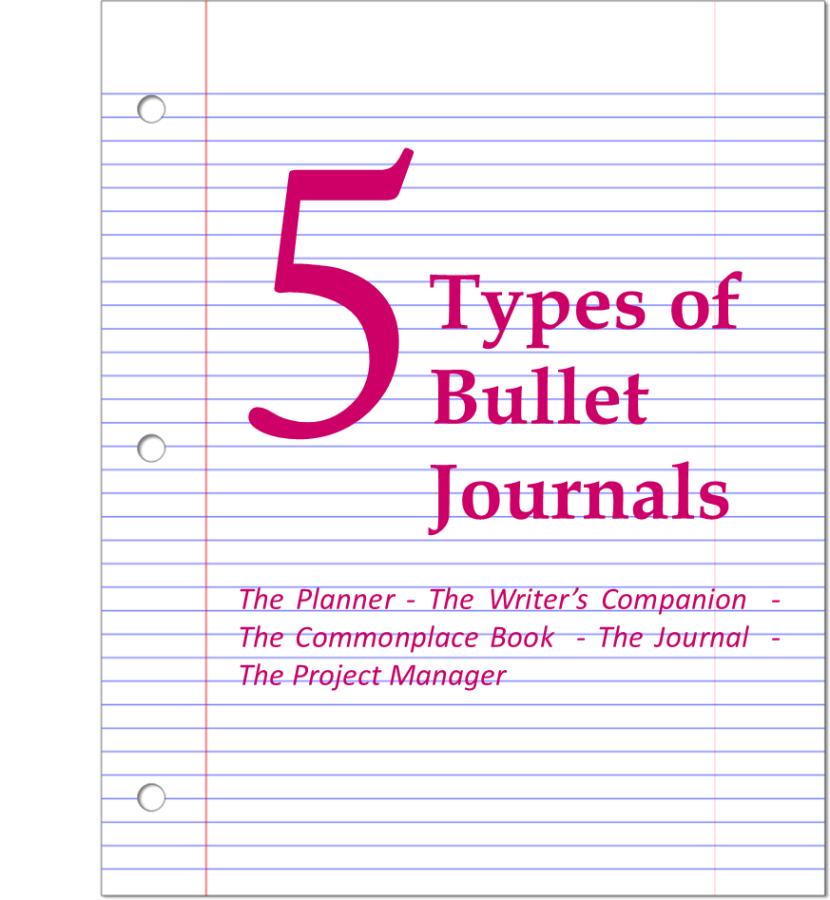When I discovered the bullet journal system I was overjoyed. Someone had successfully designed the thing I had been skirting around my whole life: a way to organise my entire life in a notebook. Personally, I’m something of a bullet journal purist: I like the system. The aesthetic that has arisen around it is nice and everything but it’s more important to find a bullet journal that you will actually use. If the aesthetic is what motivates you then by all means go for it but if you just want to use the system (like me) that’s fine too.
I use the bullet journal system in 5 distinct ways so I thought I would outline them here:
- The Planner
- The Writer’s Companion
- The Commonplace Book
- The Journal
- The Project Manager
The Planner
This is the basic bujo. It’s a diary, calendar, schedule and running to do list all in one. I love it. See the video above for how to use it and don’t get overwhelmed by the creativity of people on the internet. Your bullet journal is for you. Whatever your aesthetic, however you want to use it is fine.
The Writer’s Companion
Growing up I wrote a lot, much more than I do now. I wrote all the time. Part of the reason for this, I think, is that I had no voice in my head saying “Don’t bother. That idea won’t go anywhere”. Instead, I wrote everything down: short scenes, plot bunnies, character sketches, everything, in no particular order. More often than not a pattern would emerge and that is where my novels came from. The problem that arose was organising my bits and pieces, written down as they came to me, to make it easier to find the connected ones. Initially I solved this with a complicated system of colours and symbols. I had a set of symbols for characters, scenes and plot ideas overlaid with a set of colours for different themes or threads. For example a scene that had pirates in it would be marked with the symbol for scene in the colour for “that vague pirate novel idea”. This worked okay but became unwieldy very quickly. Fortunately, bullet journaling came to my rescue. It is much easier to start a Collection page listing my characters and the page numbers they are on, a Collection page listing my novel concepts and the page numbers they have content or notes on, etc. than to remember all my symbols for everything and then scan every page for them when trying to work.
The Commonplace Book
I don’t know how many other A Series of Unfortunate Events fans wanted a commonplace book, whatever that was, because the Baudelaire’s and Quagmire’s had them, but I definitely did. Years later I was doing an assignment on the Scientific Reformation and I discovered the original concept of a commonplace book: it’s almost like a subject guide except not necessarily themed; a miscellaneous anthology, a disorganised encyclopaedia. Basically, it’s what you copy everything down into. You borrow a book from a friend and, because they didn’t have photocopiers back in the 17th century, you copied the pages that interested you by hand into your commonplace book. The commonplace books of famous or respected people were quite sought after and when the printing press came along some people even printed copies of theirs. It was almost like a Pinterest board: “Here’s all the stuff I found interesting. Hope it helps you too”. I initially started doing this in my regular journal before I discovered bullet journals. It was interesting afterwards to go back and read that on the 5th of August, 2012, a particular passage caught my attention in a book I was reading. It’s a good way to track the things that influence you and to learn from them in a more conscious way. I usually make these copied sections their own entries in my bullet journal at the same level as Daily Log or Collection headings so that I can find specific quotations easily in the table of contents. Sometimes I journal commentary, sometimes I don’t. Speaking of journals…
The Journal
The Daily Log concept in the bullet journal system doesn’t really allow for extended “dear diary” style journaling. While I don’t journal every day or keep a dedicated diary I do occasionally like to explore my thoughts on the page. I usually make these entries mid-Log using a paragraph format instead of a bullet. This keeps my musings under the heading for that day in the Daily Log without it being quite the same as a long Note.
The Project Manager
Possibly my favourite thing about bullet journaling is the ability to nest lists. I can have a to-do list for today and a to-do list for this week and a to-do list for this month and I can also collect my household to-do list or work to-do list or blog to-do list or Nanowrimo to-do list. Additionally these lists can intersect with each other. As an example, this blog post belongs on my blog posts list. My blog posts list is itself an item on my blog to-do list (which includes things like Create WordPress account). This blog post also belongs on my to-do lists for today and this week. So, even though my to-do list for today may be looking very un-done (…), I am able to track this specific project separately and recognise what I have achieved.
How do you use your bullet journal?
